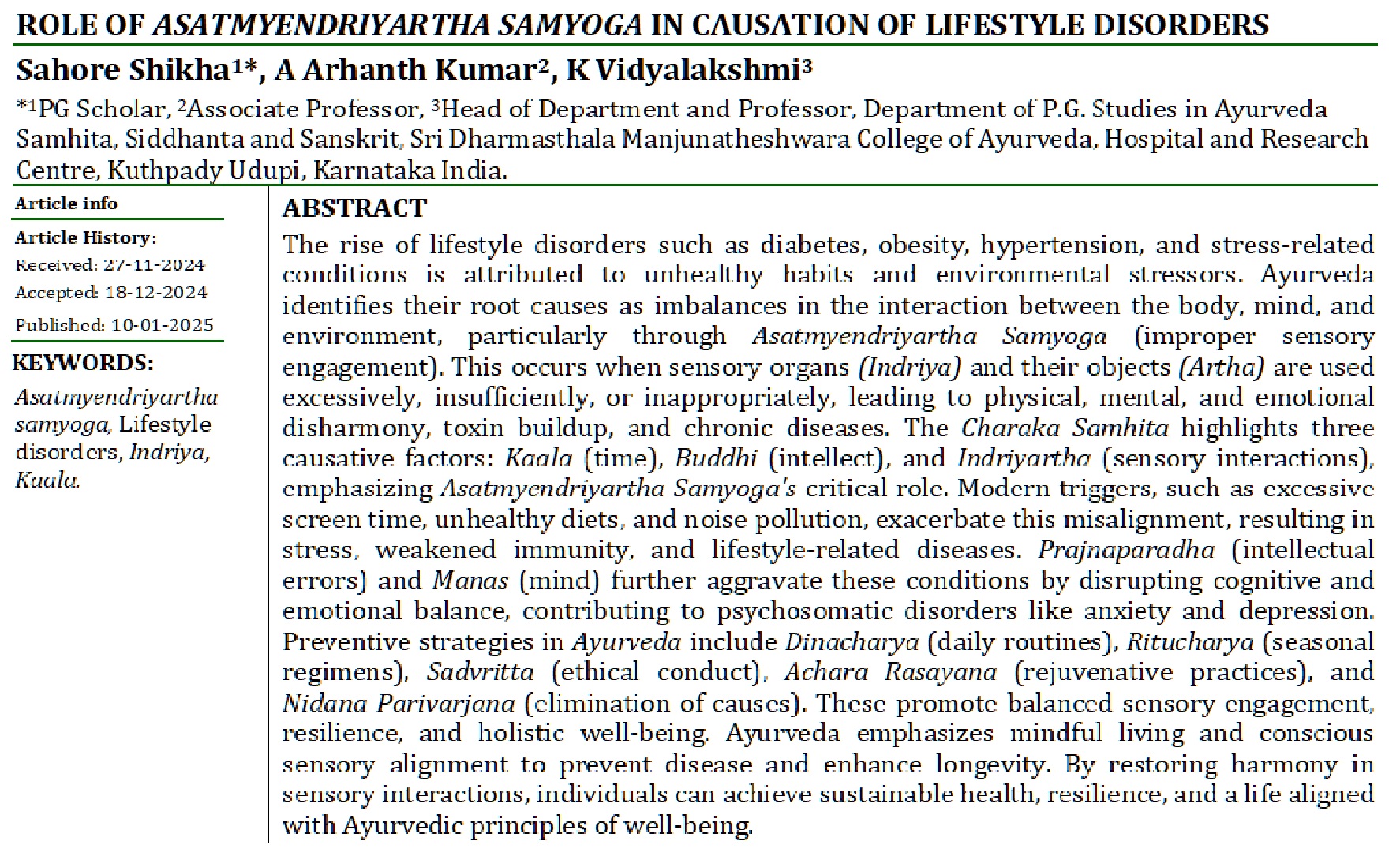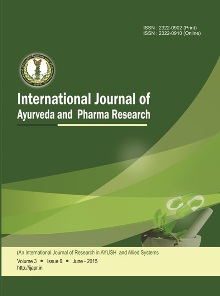Role of Asatmyendriyartha Samyoga in Causation of Lifestyle Disorders
Abstract
The rise of lifestyle disorders such as diabetes, obesity, hypertension, and stress-related conditions is attributed to unhealthy habits and environmental stressors. Ayurveda identifies their root causes as imbalances in the interaction between the body, mind, and environment, particularly through Asatmyendriyartha Samyoga (improper sensory engagement). This occurs when sensory organs (Indriya) and their objects (Artha) are used excessively, insufficiently, or inappropriately, leading to physical, mental, and emotional disharmony, toxin buildup, and chronic diseases. The Charaka Samhita highlights three causative factors: Kaala (time), Buddhi (intellect), and Indriyartha (sensory interactions), emphasizing Asatmyendriyartha Samyoga's critical role. Modern triggers, such as excessive screen time, unhealthy diets, and noise pollution, exacerbate this misalignment, resulting in stress, weakened immunity, and lifestyle-related diseases. Prajnaparadha (intellectual errors) and Manas (mind) further aggravate these conditions by disrupting cognitive and emotional balance, contributing to psychosomatic disorders like anxiety and depression. Preventive strategies in Ayurveda include Dinacharya (daily routines), Ritucharya (seasonal regimens), Sadvritta (ethical conduct), Achara Rasayana (rejuvenative practices), and Nidana Parivarjana (elimination of causes). These promote balanced sensory engagement, resilience, and holistic well-being. Ayurveda emphasizes mindful living and conscious sensory alignment to prevent disease and enhance longevity. By restoring harmony in sensory interactions, individuals can achieve sustainable health, resilience, and a life aligned with Ayurvedic principles of well-being.
Downloads

Copyright (c) 2025 International Journal of Ayurveda and Pharma Research

This work is licensed under a Creative Commons Attribution-NonCommercial-ShareAlike 4.0 International License.






